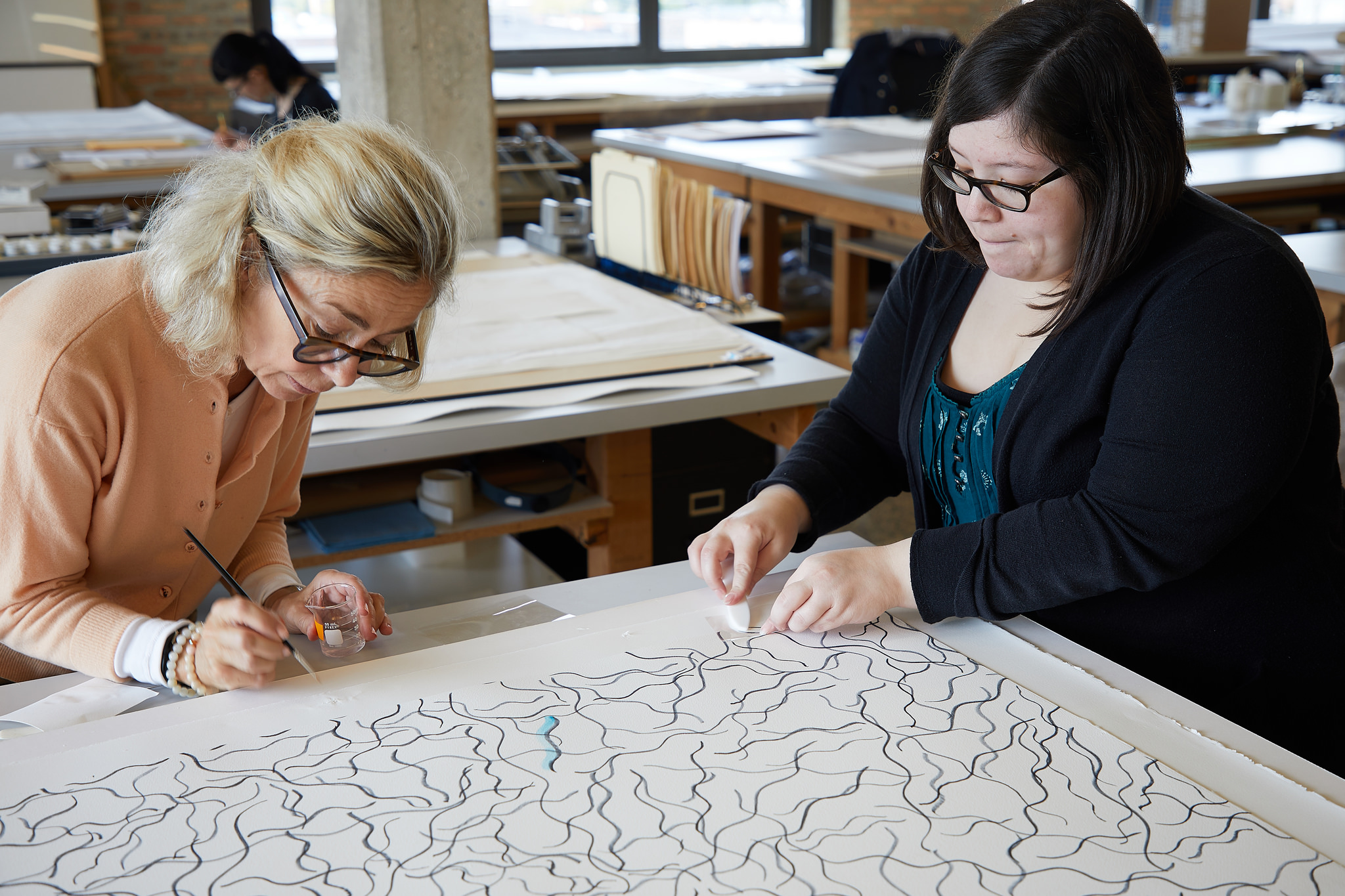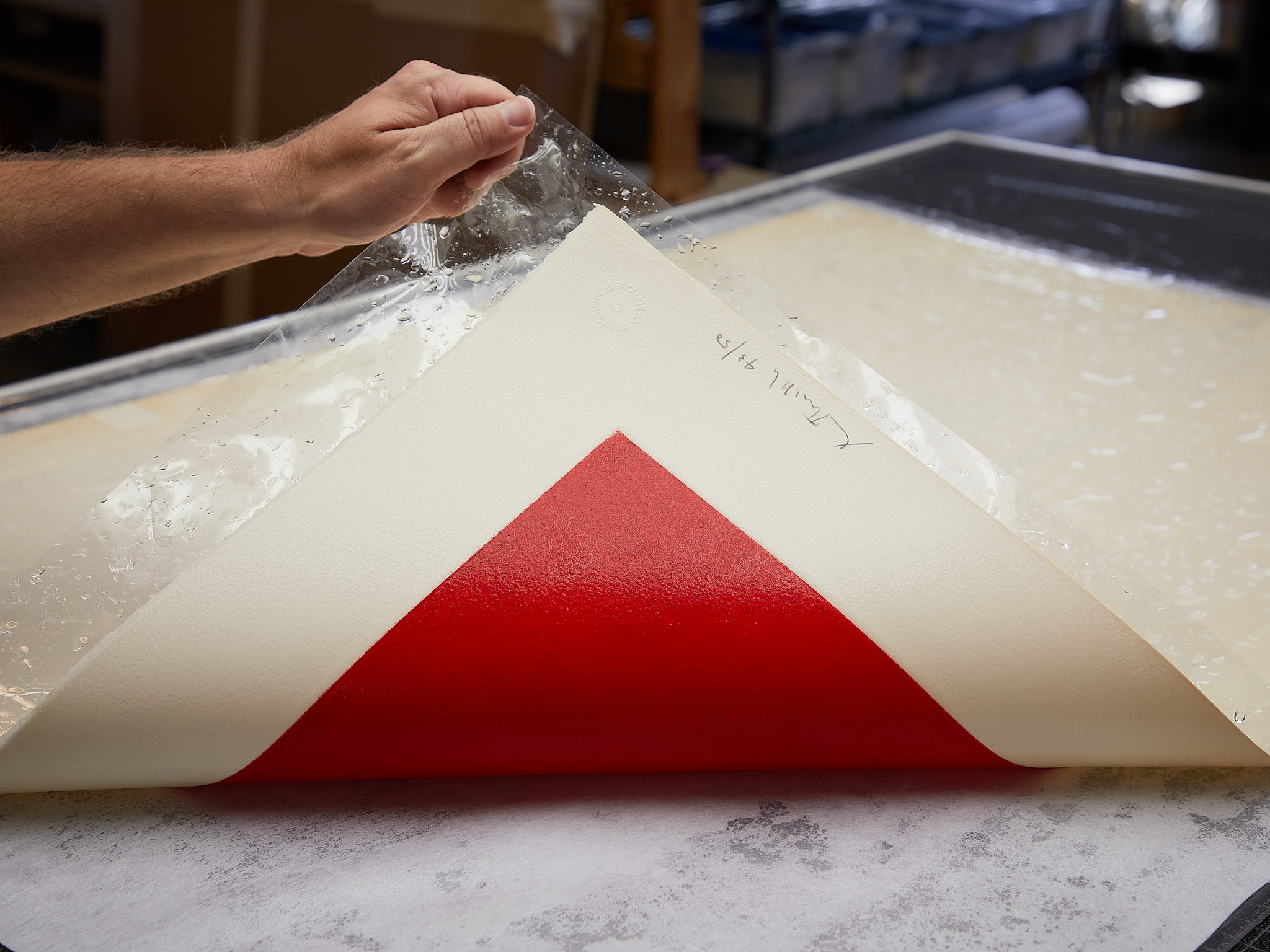The Works of Art on Paper Department maintains the historical integrity of the piece, while addressing concerns of long-term storage, display, and preservation with established methods in the field of paper conservation.
The Center's paper conservators encounter a variety of works, such as historical documents, drawings and prints, screens, pastels, watercolors, blueprints, and scrolls. The paper conservators treat each piece individually based on information gathered during examination and testing.
The Paper Department’s approach is dependent upon a wide range of inherent properties in each paper sheet. The age, type of paper, media, scale, and previous campaigns of restoration are just a few considerations for each treatment approach. Many of these properties are easily affected by a variety of environmental, housing, and age-related factors.
Our paper conservators offer options for the treatment and preservation of your piece, along with advice on proper handling, storage, and care. Each work is treated with established methods and materials used throughout the field of paper conservation. For more complex treatments, conservators maintain an ongoing dialogue with clients.
“I have been a collector of fine art for over 40 years. During the past 10 years, I have used The Conservation Center to restore and reframe numerous items, including a painting by Nicolas Africano and a drawing by Sol Lewitt. The staff of The Conservation Center is knowledgeable, very professional, and their workmanship is outstanding. I highly recommend them.”
Archive digitization and collection preservation
The Conservation Center works with colleges, universities, museums, historical institutions, and corporations on the long-term conservation and digitization of archives and collections. All reproduction work starts with our professional-level scanning equipment that provides greater safety for the object being scanned. The overhead scanner does not touch the object's surface and captures images using LED light. Overhead scanners also allow for the careful duplication of bound books, as the binding does not need to be pressed onto the flat surface of a conventional scanner. Original documents can then be conserved, housed in mylar, and stored in custom-built clamshell boxes.
Institutions often have a wide breadth of items needing treatment, such as:
• Art, artifacts, memorabilia
• Historical photographs, albums, negatives, slides
• Archival documents, letters, newspaper clippings
• Books, journals, scrapbooks
• Maps, ledgers, blueprints, and other schematics










